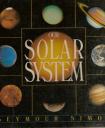Introduction:
What are the order of the planets? How big is the Earth and how many moons does each planet have? All of these are important questions that students must be able to answer by the time they enter the 6th grade. Seymour Simon takes students through the different planets in Our Solar System. Each page has a detailed instruction of the nine planets that make up our solar system.
Summary:
The books opens with a chart of all the planets in order from the sun with basic information that students must know for the SOL’s. Each planet is give a spread with information about its origins and important aspects of the planet. For instance, Mercury is the “second smallest planet in our solar system after pluto”. In addition, the beginning of the book describes the core of our solar system, the sun. The end of the book describes the different particles that orbit within our solor system. The pictures throughout the book are replicated of what we would see if we looked through a telescope.
Curriculum Connections: This book could be used as a reinforcement in class or as a guide for sixth graders when they are trying to to remember the organization of the solar system especially 6.8a) the sun, moon, Earth, other planets and their moons, meteors, asteroids, and comets , b) the relative size and distance between planets and f) the unique properties of Earth as a planet
Additional Resources:
For detailed information on the solor system try Science Monster.
Another great website that has ideas on different lesson plans to be instituted in the classroom on the solar system: The Solar System
Solar System Live– This site shows the solar system as it is on a specific date.
General Information:
Book: Our Solar System
Author: Simon Seymour
Illustrator: N/A
Publisher: HarperCollins
Publication Date:September 1992
Pages: 64
Grade Range: 6th grade
ISBN: 978-0688099923

